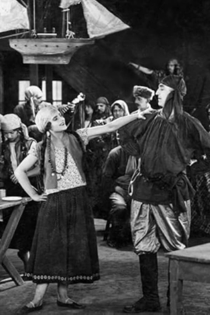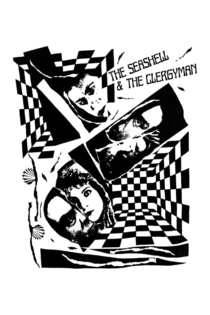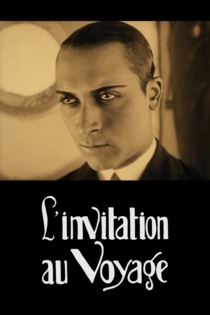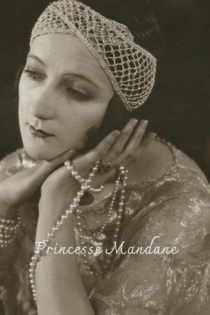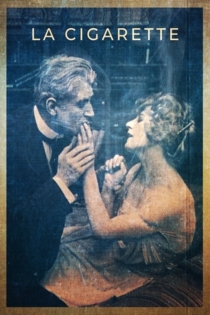
Germaine Dulac
1882 - 1942Germaine Dulac was born into an upper-middle-class family of a career military officer. Since her father's job required the family to frequently move between small garrison towns, Germaine was sent to live with her grandmother in Paris. She soon became interested in art and studied music, painting, and theater. Following the death of her parents, Dulac moved to Paris and combined her growing interests in socialism and feminism with a career in journalism. In 1905 she married Louis-Albert Dulac, an agricultural engineer who also came from an upper-class family. Four years later she began writing for La Française, a feminist magazine edited by Jane Misme where she eventually became the drama critic. Dulac also found time to work on the editorial staff of La Fronde, a radical feminist journal of the time. She also began to pursue her interest in still photography, which preceded her initial entry into filmmaking. With the help of her husband and friend she founded a film company and directed a few commercial works before slowly moving into Impressionist and Surrealist territory. She is best known today for her Impressionist film, La Souriante Madame Beudet ("The Smiling Madam Beudet", 1922/23), and her Surrealist experiment, La Coquille et le Clergyman ("The Seashell and the Clergyman", 1928). Her career as filmmaker suffered after the introduction of sound film and she spent the last decade of her life working on newsreels for Pathé and Gaumont. Dulac and her husband divorced in 1920.
Following her long and influential cinema career, Dulac became the president of the Fédération des ciné-clubs, a group which promoted and presented the work of new young filmmakers, such as Joris Ivens and Jean Vigo. Dulac also taught film courses at the École Technique de Photographie et de Cinématographie on the rue de Vaugirard. Following her death in 1942, Charles Ford called attention to the difficulty the French Press had with printing her obituary: "Bothered by Dulac’s non-conformist ideas, disturbed by her impure origins, the censors had refused the article which, only after vigorous protest by the editor-in-chief of the magazine, appeared three weeks late. Even dead, Germaine Dulac still seemed dangerous..."
Gossette
Germaine Dulac
Régine Bouet, Maurice Schutz
In Gossette (1923), Dulac experimented with and designed a number of special lenses and prisms to produce a variety of effects and multiply the expressive means which translate the characters' visions and mental states. She also reversed class and gender roles, as she made the female character Gossette come to the aid of Phillipe de Savières, falsely accused of murder, in order to save his name.
Gossette
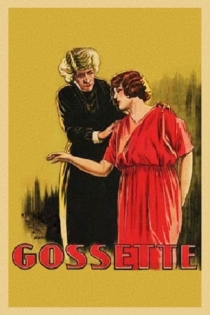
Antoinette Sabrier
Germaine Dulac
Ève Francis, Gabriel Gabrio
"Adapted from a play by Romain Coolus, whose work Dulac had covered as a theater critic at the turn of the century, this atmospheric and socially inquisitive film tells the tale of an independent, sexually liberated woman (Eve Francis) who is torn between her husband (Gabriel Gabrio) and her lover (Paul Guide). Controversial at the time of its release, Antoinette Sabrier finds Dulac using her bold sense of visual rhythm to achieve a complex portrait of a woman trapped in an unhappy marriage and a nuanced investigation into human intimacy, with her characters’ emotions expressed through then-innovative cinematic techniques such as slow motion and associative montage. " - Film Society of Lincoln Center
Antoinette Sabrier
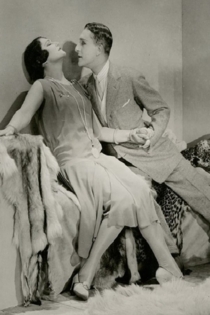
Thèmes et variations
Germaine Dulac
I evoke a dancing woman. A woman? No. A bouncing line with harmonious rhythm. I evoke a luminous projection on veils ! Precise matter! No. Fluid rhythms. Why should one disregard, on screen, the pleasure that movement brings us in the theatre? Harmony of lines. Harmony of light. Lines, surfaces, volumes evolving directly, without the artifice of evocation, in the logic of its forms, dispossessed of any overly human sense, allowing an elevation towards the abstract, thus giving more space to sensations and to dreams : integral cinema. —Germaine Dulac
Themes and Variations

Disque 957
Germaine Dulac
Dulac’s three 1929 “abstract” films, Disque 957, Αrabesques, and Themes and Variations, were the results of a long period of reflection by the filmmaker, who sought to create a “pure” or “integral” cinema that would capture the essence of the new medium and owe nothing to the other arts. Each of these three studies was designed to be played silent. The first one, Disque 957, is conceived of as a “visual impression […] in listening to Frédéric Chopin’s Preludes n. 5 and 6”. Its title and its opening shot of lightplay on a spinning record not only announce the film’s dominant cyclical motif, but also evoke one of the filmmaker’s major sources of inspiration in Loie Fuller’s serpentine dances. —Avant-Garde Film Festival
Disque 957

La folie des vaillants
Germaine Dulac
Lia Loo, Raphaël Lievin
A symbolist portrait of two gypsies in love, this captivating film finds Dulac deconstructing onscreen gender roles and striving to achieve her idea of cinema as a “visual symphony,” emphasizing rhythmic editing over acting to achieve a “cinema of suggestion.”
The Madness of the Valiants
